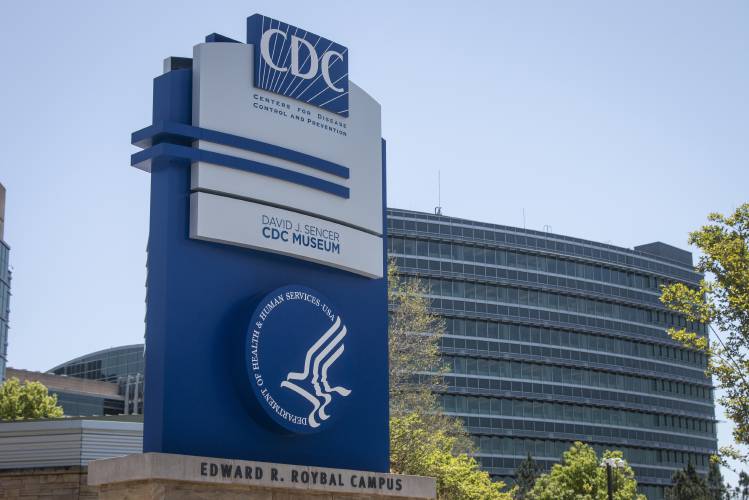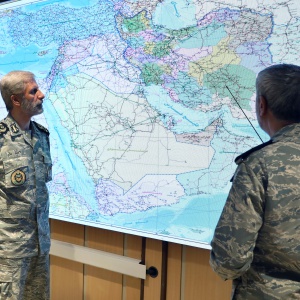Opinion: Public health is vital to all of us all of the time

A Centers for Disease Control and Prevention sign stands at the entrance of their offices in Atlanta on April 19, 2022. Ron Harris/ AP
| Published: 02-09-2024 6:00 AM |
Hanan Babikir Bedri, MS, MA, is the executive director of the New Hampshire Public Health Association.
The phrase “public health” is familiar enough. We hear it on the news, if nowhere else. It came up often when COVID-19 swept across the country. People were getting sick, and we had to know how the disease spread. Public health professionals went to work and helped pull us out of that crisis. But when it comes to what public health is, and how it helps us and our families, quite a few people are in the dark.
The CDC Foundation defines public health as the science of protecting, promoting, and improving the health of people and their communities. It is what you see when you look past the injuries and ailments of individuals at the well-being of whole groups of people. Put simply, whereas healthcare professionals are concerned with one patient at a time, public health has its eye on whole populations.
When the healthcare system registers an uptick in respiratory disease, doctors and nurses treat patients in need, while public health professionals survey the problem at the macro level. They want to know what sort of people are predominantly afflicted, and how an illness spreads across age groups and geographical lines, as well as socioeconomic and racial divides. The public health work is carried out by public health scientists and researchers, epidemiologists, public health microbiologists, health educators, community planners, occupational health and safety professionals, and community health workers, to name a few.
Health disparity and inequity is an important area in the public health field, because depending on your age, location, gender, socioeconomic status, and race, you are likely to get better or worse care than others. Public health professionals seek to learn why, for example, the maternal mortality rate in 2021 was 2.6 times greater for non-Hispanic Black women than it was for non-Hispanic white women, as reported by the Centers for Disease Control and Prevention.
Researchers have found that even kids face stark health inequities. Children of color face longer wait times in emergency rooms, and are less likely to be prescribed painkillers when they suffer injuries like broken bones. Because of their racial identities, they suffer more, likely due to unconscious bias among healthcare workers and unequal access to economic opportunities. Without a well-funded and well-resourced public health system, we cannot understand where these disparities originate, let alone remedy them.
It is not hard to find advances that have been made as a result of public health research and policymaking. Banning smoking in bars and restaurants followed many years and dollars spent studying the effects of secondhand smoke. These bans led to significant reductions in risks of respiratory and heart disease, according to the CDC. This results in fewer illnesses, which means fewer people are admitted to hospitals. It means less money spent on healthcare by individuals, insurers, and taxpayers. Smoking bans, like many public health measures, faced resistance upon implementation, but the results are altogether positive for individuals and the economy.
Although public health and healthcare differ in focus, they do overlap. The two systems need one another to function. But they are distinct, and expertise in one area does not equate to expertise in another. A 2020 op-ed in the Boston Globe lamented that many public health officials, including at the level of the executive branch of the federal government, did not have public health training. People in those roles were medical professionals, but they were newcomers to public health. They, therefore, lacked the tools necessary to be effective in their roles, and when COVID-19 reared its head, we suffered the consequences. Big decisions had to be made with limited time, requiring sharp analytical tools and practiced methodologies that those in influential positions lacked. When public health fails to rise to the occasion, healthcare workers struggle on the ground like a modern army that must fight a battle without air support.
Article continues after...
Yesterday's Most Read Articles
 New Hampshire legalizes public alcohol consumption in designated ‘social districts’
New Hampshire legalizes public alcohol consumption in designated ‘social districts’
 State rules Epsom must pay open-enrollment tuition to other school districts, despite its refraining from the program
State rules Epsom must pay open-enrollment tuition to other school districts, despite its refraining from the program
 Town turmoil: Chichester town administrator resigns again
Town turmoil: Chichester town administrator resigns again
 New Hampshire providers brace for Medicaid changes that reach beyond healthcare
New Hampshire providers brace for Medicaid changes that reach beyond healthcare
 Warner town administrator granted restraining order against selectman
Warner town administrator granted restraining order against selectman
 NH judge decides to pause Trump’s birthright citizenship order
NH judge decides to pause Trump’s birthright citizenship order
Today’s public health concerns vary widely, ranging from widespread addiction to opioids to the effects on our health of per- and polyfluorinated substances, or PFAS. These are chemicals used in heat- and stain-resistant coatings for clothing, furniture, and non-stick cooking surfaces. PFAS have been found in the bloodstreams of human beings, and public health researchers are still determining what their effects on our health are and will be in the future.
In order to address this and other concerns, public health professionals must maintain partnerships with industries, agencies, healthcare workers, and policymakers. They cannot do their work in isolation; they must be heard and heeded, so that we may be ready for the next threat to our collective health.
If we want to live in a healthy society, we need a robust public health system where talented and experienced professionals can thrive. As C. Everett Koop, former U.S. surgeon general said, public health is vital to all of us all of the time.







 Opinion: Trumpism in a dying democracy
Opinion: Trumpism in a dying democracy Opinion: What Coolidge’s century-old decision can teach us today
Opinion: What Coolidge’s century-old decision can teach us today Opinion: The art of diplomacy
Opinion: The art of diplomacy Opinion: After Roe: Three years of resistance, care and community
Opinion: After Roe: Three years of resistance, care and community
